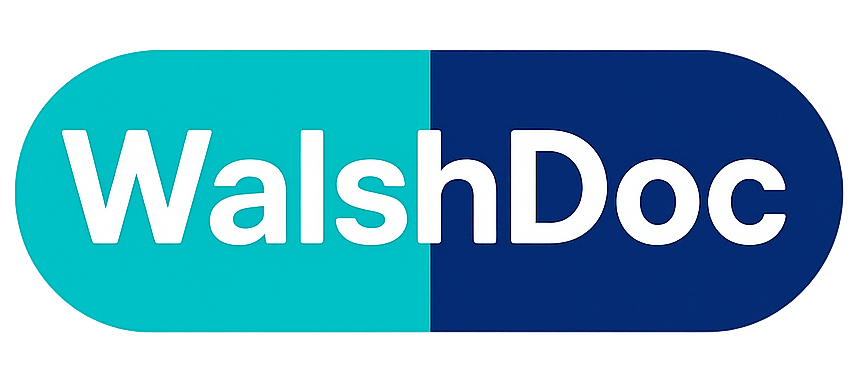Walsh Protocol Treatments
Walsh-based nutrient therapy focuses on correcting the biochemical patterns that drive mood, behavior, stress intolerance, and cognitive symptoms.
Rather than masking symptoms, this approach targets the underlying nutrient, metabolic, and neurotransmitter imbalances that shape how a person thinks, feels, and responds to stress.
Every treatment plan follows a specific therapeutic sequence, ensuring safety, stability, and sustained improvement.
THE TREATMENT SEQUENCE
WalshDoc follows the same sequencing clinically validated across thousands of patients:
1. Stabilize copper and zinc
2. Reduce oxidative stress & inflammation
3. Support methylation pathways (if indicated)
4. Restore glutathione and mitochondrial function
5. Address gut, detox, viral, or toxic burden as needed
6. Optimize long-term resilience through alkalinity, diet, and ATP support
Skipping steps often worsens symptoms — especially in copper overload and undermethylation.
1. Copper Regulation & Zinc Restoration
(Always the first step before methylation therapy)
Copper overload is one of the most common biochemical drivers of:
-
anxiety
-
panic
-
overstimulation
-
emotional volatility
-
ADHD-like symptoms
-
postpartum symptoms
-
agitation
Core therapies include:
-
zinc supplementation (titrated slowly to avoid rapid copper shifts)
-
P5P (active B6) to mobilize stored copper
-
antioxidants to control oxidative stress during copper correction
-
support for ceruloplasmin
-
dietary adjustments to reduce copper intake
Results often include significant reduction in anxiety, emotional reactivity, and sensory overload within 2–6 weeks.
2. Oxidative Stress & Inflammatory Control
(Second phase — essential for sensitive nervous systems)
Oxidative stress amplifies:
-
irritability
-
fatigue
-
brain fog
-
emotional reactivity
-
sensitivity to supplements
-
histamine intolerance
Treatments often include:
-
vitamin C, vitamin E, NAC, selenium
-
glutathione precursors
-
omega-3 fatty acids
-
anti-inflammatory diet adjustments
-
redox support
This phase lowers “chemical noise” and prepares the system for safer methylation support.
3. Methylation Support (Only After Copper Balance)
(For undermethylators ONLY — not all patients need methyl donors)
Undermethylation contributes to:
-
OCD tendencies
-
rigid thinking
-
inner tension
-
low serotonin activity
-
perfectionism
-
depression with high anxiety
Treatment focuses on:
-
SAMe (introduced slowly)
-
methionine
-
TMG or choline
-
magnesium
-
creatine for ATP and methyl buffering
-
balancing folate cautiously
This improves mood stability, stress resilience, motivation, and emotional flexibility.
4. Pyroluria Support (Zinc/B6 Deficiency Pattern)
Pyroluria (kryptopyrrole disorder) reduces zinc and B6 during stress.
Symptoms include:
-
anxiety
-
low stress tolerance
-
agitation
-
irritability
-
poor dream recall
-
sensory sensitivity
Effective treatment includes:
-
zinc
-
P5P
-
magnesium
-
gamma linolenic acid
-
antioxidants
This improves stress tolerance and reduces emotional reactivity.
5. Overmethylation & Sensory Sensitivity Treatment
For overmethylators, methyl donors worsen symptoms.
Treatment avoids methyl donors and instead supports:
-
histamine pathways
-
nervous system calming
-
glutamate/GABA balance
-
inflammation control
Nutrients include:
-
niacin / niacinamide
-
antioxidants
-
magnesium
-
calming botanicals
-
nervous system stabilization therapies
6. Mitochondrial & ATP Support
(Critical for chronic fatigue, OCD, SAH overload, and stress syndromes)
Many patients with undermethylation or oxidative stress have:
-
impaired ATP
-
low creatine phosphate
-
mitochondrial dysfunction
-
elevated SAH (which blocks methylation)
Therapies:
-
creatine
-
acetyl-L-carnitine
-
CoQ10
-
riboflavin
-
magnesium glycinate/taurate
-
ketone support (ketone esters or low-carb cycles)
-
alpha-lipoic acid
This improves energy, stress recovery, mood regulation, and executive function.
7. Ketone-Ester / Mitochondrial Ketosis Therapies
(For OCD, neuroinflammation, neurodegenerative patterns)
Inspired by the Seyfried mitochondrial model:
-
ketone esters bypass damaged mitochondria
-
stabilize neuronal firing
-
reduce glutamate overload
-
improve OCD, anxiety, and agitation
-
reduce neuroinflammation
Used selectively when metabolic patterns or organic acid testing indicate mitochondrial impairment.
8. SAH Disposal & Homocysteine Reduction
For patients with elevated SAH, methylation stalls until SAH is cleared.
Therapies include:
-
B6 / P5P
-
riboflavin
-
betaine support (carefully titrated)
-
antioxidant stabilization
-
gut-driven sulfur pathway repair
-
homocysteine reduction protocols
This is especially important in chronic stress, inflammation, and undermethylation.
9. Alkalinity, Kidney Support & Detoxification
Useful when:
-
inflammation is high
-
pH is consistently acidic
-
heavy metals or toxins are elevated
-
fatigue or agitation worsens under stress
Therapies:
-
dietary alkalinity
-
mineral buffering
-
hydration protocols
-
sweating/sauna
-
kidney support nutrients
-
gut detoxification (microbiome optimization)
Improves resilience and accelerates recovery.
10. Gut, Viral, & Immune Treatment (As Needed)
Based on stool, viral panels, or symptoms:
-
antimicrobial support
-
probiotics & SCFA support
-
viral modulation (EBV, CMV, Coxsackie)
-
anti-inflammatory botanicals
-
mold/mycotoxin strategies when applicable
These layers are added only after biotype stabilization.
HOW A TREATMENT PLAN IS BUILT
1. Identify your biotype
through questionnaire + labs
2. Correct copper and oxidative stress
before introducing methylation support
3. Introduce targeted nutrient therapy
based on your biotype and symptoms
4. Layer mitochondrial, detox, gut, or viral support
as needed
5. Use follow-up questionnaires or AI-based monitoring
to adjust doses and track progress
Start Your Biotype Evaluation
Feeling anxious, overwhelmed, tired, or stuck?
Your symptoms may reflect a correctable biochemical pattern.
➡️ Start your free biotype assessment
